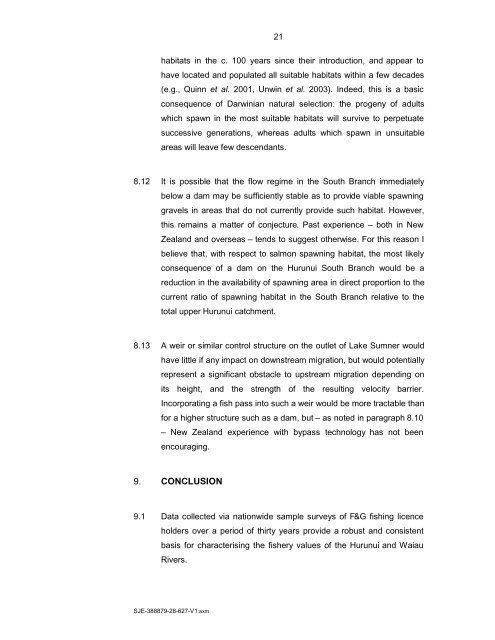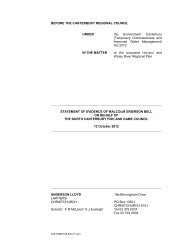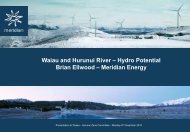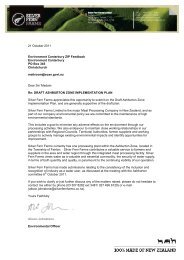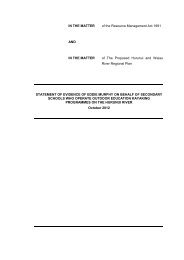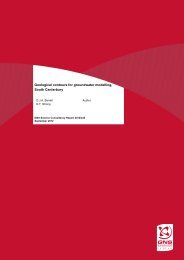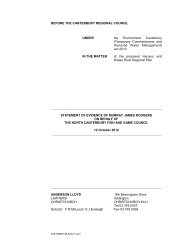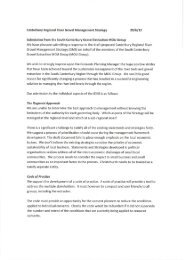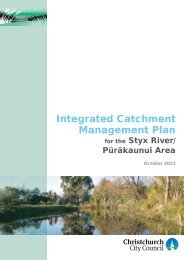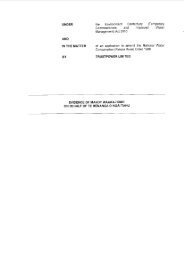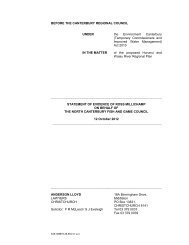Evidence of Martin Unwin - Environment Canterbury
Evidence of Martin Unwin - Environment Canterbury
Evidence of Martin Unwin - Environment Canterbury
You also want an ePaper? Increase the reach of your titles
YUMPU automatically turns print PDFs into web optimized ePapers that Google loves.
21habitats in the c. 100 years since their introduction, and appear tohave located and populated all suitable habitats within a few decades(e.g., Quinn et al. 2001, <strong>Unwin</strong> et al. 2003). Indeed, this is a basicconsequence <strong>of</strong> Darwinian natural selection: the progeny <strong>of</strong> adultswhich spawn in the most suitable habitats will survive to perpetuatesuccessive generations, whereas adults which spawn in unsuitableareas will leave few descendants.8.12 It is possible that the flow regime in the South Branch immediatelybelow a dam may be sufficiently stable as to provide viable spawninggravels in areas that do not currently provide such habitat. However,this remains a matter <strong>of</strong> conjecture. Past experience – both in NewZealand and overseas – tends to suggest otherwise. For this reason Ibelieve that, with respect to salmon spawning habitat, the most likelyconsequence <strong>of</strong> a dam on the Hurunui South Branch would be areduction in the availability <strong>of</strong> spawning area in direct proportion to thecurrent ratio <strong>of</strong> spawning habitat in the South Branch relative to thetotal upper Hurunui catchment.8.13 A weir or similar control structure on the outlet <strong>of</strong> Lake Sumner wouldhave little if any impact on downstream migration, but would potentiallyrepresent a significant obstacle to upstream migration depending onits height, and the strength <strong>of</strong> the resulting velocity barrier.Incorporating a fish pass into such a weir would be more tractable thanfor a higher structure such as a dam, but – as noted in paragraph 8.10– New Zealand experience with bypass technology has not beenencouraging.9. CONCLUSION9.1 Data collected via nationwide sample surveys <strong>of</strong> F&G fishing licenceholders over a period <strong>of</strong> thirty years provide a robust and consistentbasis for characterising the fishery values <strong>of</strong> the Hurunui and WaiauRivers.SJE-388879-28-627-V1:axm


